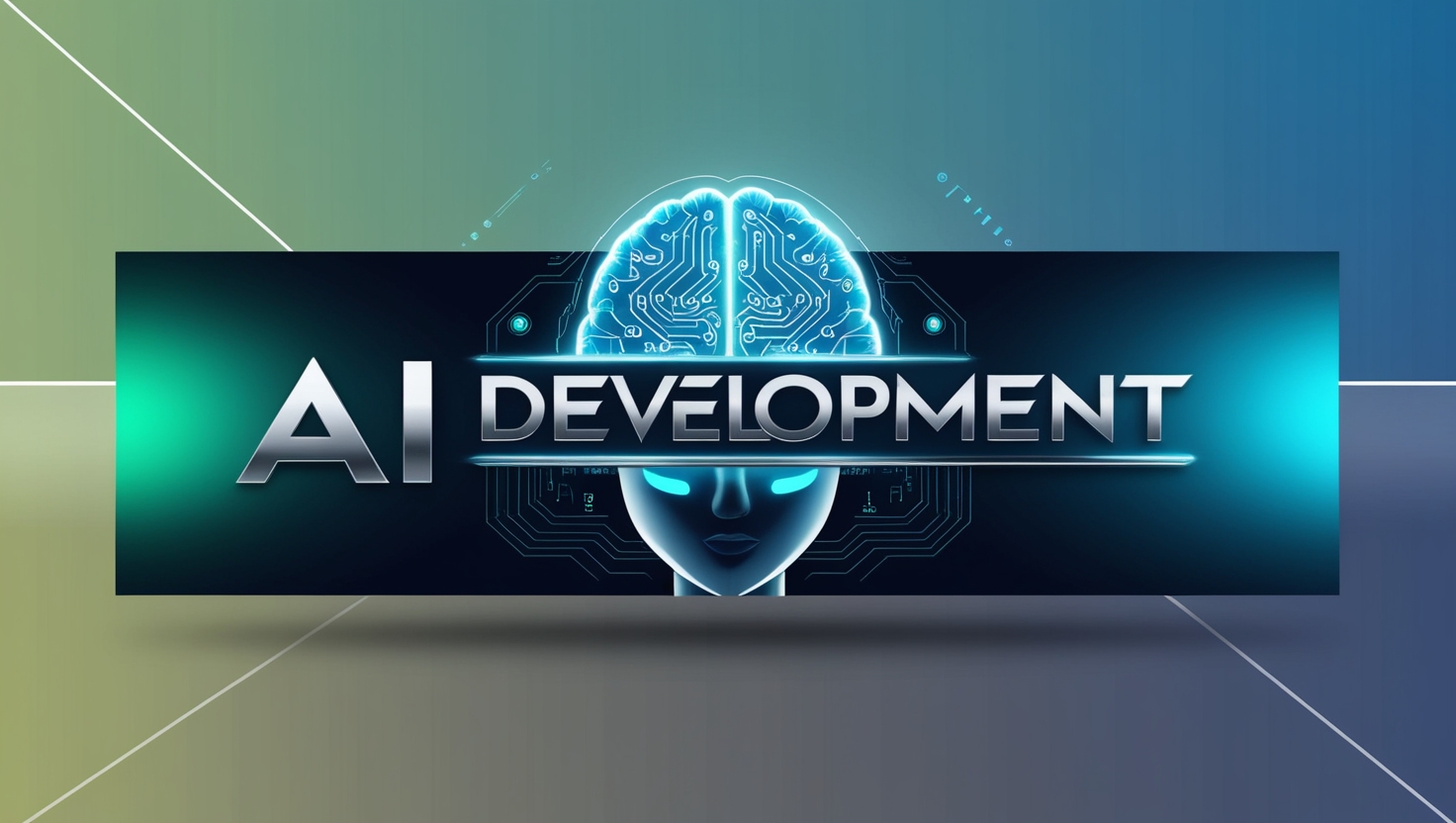How to Build an AI Chatbot :Step-by-Step Guide

Strong 8k brings an ultra-HD IPTV experience to your living room and your pocket.
Building an AI chatbot has become a vital tool for businesses and developers seeking to automate customer service, enhance user experience, and streamline communication. Whether you want to create a simple chatbot for answering frequently asked questions or a complex one capable of handling various tasks, the process can be broken down into manageable steps.
In this article, we will guide you through the essential stages of developing an AI chatbot, from initial planning to deployment. By the end, you will have a clearer idea of what it takes to create an AI-driven chatbot that can assist users effectively.
Step 1: Define the Chatbot’s Purpose
Before jumping into coding or selecting tools, start by identifying the purpose of your chatbot. This step is essential because it will guide every decision you make throughout the development process.
Customer Support: Many companies build chatbots to answer customer queries, handle common problems, and reduce wait times.
E-commerce Assistance: An AI chatbot can help users search for products, offer recommendations, and even facilitate transactions.
Lead Generation: Some chatbots are designed to qualify leads by asking users specific questions and passing along information to the sales team.
Entertainment: If you want a chatbot that provides entertainment, such as jokes or games, you'll need to tailor its programming to engage users in a fun way.
Once you decide on the chatbot’s role, you can then set clear objectives, such as handling 50 customer inquiries per hour or reducing response time to under 5 minutes.
Step 2: Choose a Chatbot Framework or Platform
Building an AI chatbot requires an effective platform or framework that helps with the complex parts of natural language processing (NLP) and machine learning. Various chatbot development tools are available, so pick one that fits your needs. If you're working with an AI chatbot development company, they can help you select and integrate the right framework for your specific requirements.
Here are some popular platforms:
Dialogflow: This Google-owned platform offers NLP capabilities and integrations with other Google services, making it a good choice for chatbots that need to handle complex queries.
Rasa: For developers who want a more hands-on approach, Rasa offers open-source tools for building AI chatbots with flexibility.
Microsoft Bot Framework: A comprehensive solution for developing intelligent bots that can run across a range of devices.
Botpress: This open-source platform allows you to design bots with easy-to-use interfaces and customize workflows.
Choosing the right framework depends on factors such as the chatbot’s complexity, the programming languages you are familiar with, and your project budget.
Step 3: Design the Conversation Flow
A successful AI chatbot isn’t just about the technology; it also needs to have a well-designed conversation flow. A conversation flow defines how the bot interacts with users, including what it says, how it responds, and what actions it takes.
There are two main approaches to structuring conversation flows:
Rule-based: In a rule-based system, the chatbot uses predefined responses triggered by specific keywords or phrases. These are best suited for simple tasks like FAQ bots.
AI-based: AI chatbots are more dynamic, using machine learning and NLP to understand and generate human-like responses. These systems are more flexible and can handle complex queries.
Map out the different user interactions, breaking them down into decision trees or flowcharts. Think of all possible user inputs, possible responses from the bot, and what outcomes each conversation path will lead to. This stage is crucial for ensuring a smooth user experience.
Step 4: Implement Natural Language Processing (NLP)
The next step in building an AI chatbot involves integrating NLP technology, which enables the bot to understand and respond to user input in a way that mimics human conversation.
Text Preprocessing: This step includes cleaning and formatting text data. Removing punctuation, converting text to lowercase, and eliminating stop words (common words like "the," "is," "at") help in making sense of the input.
Intent Recognition: The bot must be able to detect what the user is trying to achieve (e.g., asking for help or requesting a product). Use NLP models like BERT or GPT for this purpose.
Entity Recognition: Along with intent, the chatbot needs to recognize specific keywords or entities that are important to the conversation. For example, if a user asks for the weather in “Paris,” the entity would be the city name "Paris."
Context Management: The bot must be able to keep track of ongoing conversations, remembering previous exchanges to provide relevant responses.
If you're working with a pre-built framework like Dialogflow or Rasa, these NLP functionalities come out of the box, but you can also enhance the performance with additional models and libraries if needed.
Step 5: Develop the Chatbot’s Backend
The backend is where all the logic and data handling occurs. This is where you connect the chatbot’s conversation flow with APIs, databases, and business logic.
API Integration: For most chatbots, integrating with external systems is essential. For example, if your bot is designed to help users book flights, you will need to connect it to a flight booking API.
Database: If your bot needs to store user information, preferences, or past interactions, a database is required. Popular options include MySQL, MongoDB, or cloud-based databases like Firebase.
Business Logic: This is the set of rules and algorithms that drive the functionality of your chatbot. For example, you might create a system that calculates shipping costs based on a user’s location or a recommendation engine that suggests products based on user preferences.
Your backend should be secure, efficient, and scalable to handle a growing number of users.
Step 6: Train the Chatbot
After developing the core of your chatbot, it’s time to train it. The goal of training is to improve the accuracy of the AI, allowing the bot to provide better responses and handle more complex conversations.
To train your chatbot, follow these steps:
Data Collection: Gather a dataset of conversations that are relevant to your chatbot’s domain. This could include customer service chats, sales inquiries, or support tickets.
Training the Model: Use machine learning techniques to teach the chatbot how to process and respond to user input. You may need to use supervised learning, where you label data and teach the bot how to respond accordingly.
Testing and Iteration: Regularly test the chatbot with sample inputs to check its accuracy. If it fails to recognize a particular query or delivers poor responses, fine-tune the model and adjust the training dataset accordingly.
Effective training requires a good dataset and continual feedback to improve the bot’s performance.
Step 7: Test the Chatbot
Before you launch your chatbot, conduct thorough testing to ensure it works as expected. Testing allows you to identify any bugs, errors, or gaps in functionality.
Functional Testing: Test the chatbot’s core functionality, such as conversation flow, API interactions, and database queries.
User Testing: Let real users interact with the bot in a controlled environment. Collect feedback on usability, response quality, and overall satisfaction.
Performance Testing: Test the bot under various load conditions to ensure it can handle a high volume of users without crashing or slowing down.
Testing is essential for identifying weak points and refining the user experience.
Step 8: Deploy the Chatbot
Once your chatbot is tested and ready, it’s time to deploy it to the desired platform. Depending on your chatbot’s purpose, you may want to integrate it with popular messaging platforms such as:
Facebook Messenger
Slack
Telegram
Your website or mobile app
Deployment may also involve setting up hosting, monitoring, and analytics tools to track how the bot is performing in real-world conditions.
Step 9: Monitor and Maintain the Chatbot
Building and launching a chatbot doesn’t mean the process is over. To ensure it remains useful, monitor its performance regularly.
User Feedback: Collect user feedback to spot issues that may not have been evident during testing.
Update and Improve: As your chatbot handles more interactions, it will inevitably need updates. Refine its language processing, conversation flow, and business logic as needed.
Analytics: Use analytics tools to track user behavior, response times, and satisfaction. This data can help identify areas for improvement.
Keep iterating on your chatbot to ensure it provides a top-notch experience for users.
Conclusion
Building an AI chatbot is an exciting but involved process that requires a clear plan, the right tools, and ongoing refinement. By defining its purpose, selecting the appropriate framework, designing conversation flows, integrating NLP, developing the backend, and thoroughly testing it, you can create a chatbot that adds real value for users. Once deployed, the chatbot will require regular monitoring and updates to keep it functioning effectively and efficiently.
Through this systematic approach, you'll be able to create a chatbot that serves your business and users with efficiency and intelligence.
Note: IndiBlogHub features both user-submitted and editorial content. We do not verify third-party contributions. Read our Disclaimer and Privacy Policyfor details.


